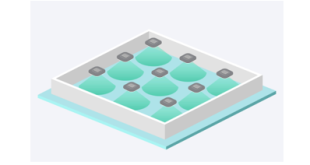Scissors and shears (larger scissors) have been used for years to cut many different types of materials. The scissor or shear is made by connecting a blade to a handle and then crossing over a second set (blade and handle) so that when you squeeze the handles together, the blades slice against each other cutting the material. The squeezing is described as a scissoring action. To continue this cutting process the handles are pulled apart and re-squeezed repeatedly cutting more and more of the material small sections at a time.
There are many different kinds of scissors: bent sewing scissors, embroidery scissors, large fabric shears, and pinking shears. Each type of scissor has its own specialized purpose to help make your cutting faster, easier, and more 248 accurate. Good quality bent scissors are a must for any sewing project because they will allow the fabric to lie flat on the cutting table while your slide the scissors forward cutting with ease. Embroidery scissors are small narrow-bladed very sharp scissors designed to easily cut embroidery jump stitches, trim excess, and generally do the finest sewing cuts. Large shears are used to cut large sections of fabric. These are common in fabric shops where many yards of fabric are cut every day. Pinking shears are special finishing scissors designed to leave a triangular finish along the raw edge of the fabric. Select your scissors very carefully. Remember this is not the area to scrimp.
Properly holding scissors is a bit of an art form. Notice the index finger actually points down the blade in the direction of the cut while the thumb and the two middle fingers squeeze the handles together. Each time you squeeze, the blades cut part of the fabric or other material, but when the thumb and fingers pull the scissors back apart it is necessary to realign the scissors for the next cut.
Some Basic Guidelines for Cutting With Scissors
• Layout and cut out along the grainline as much as possible.
• Hold your scissors correctly.
• If you are right-handed, you will find it more comfortable to cut along the fabric if it is stabilized by your left hand. If you are left-handed, try the reverse.
• Avoid lifting the fabric while you cut.
• Make long generally full blade cuts with steady strokes for straight cuts.
• Make shorter more precise cuts on curves, turns, and other tight spots.
• It is possible to cut along the cut line in tight areas leaving a little extra ease and go back to more finely trim after the initial cut.
• Take special care around pattern notches to mark these with a short clip of the fabric for later fabric joining. Do not cut notches into the body of a pattern.
• Take your time and be careful to cut smoothly and accurately. If you are not careful, however, the cut can become choppy instead of perfectly straight.
 NEWSHUNTS
NEWSHUNTS




